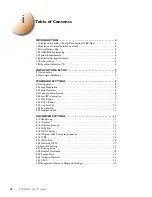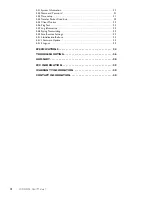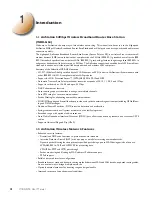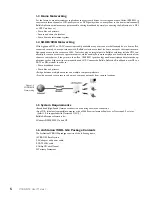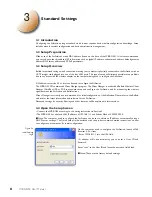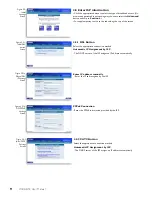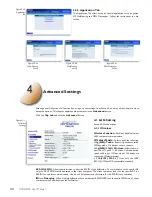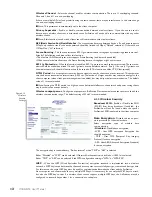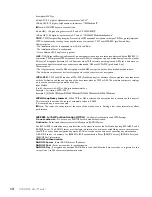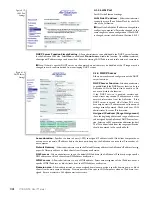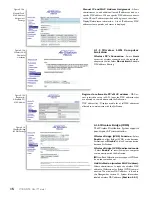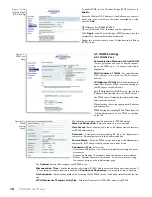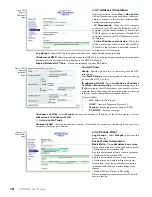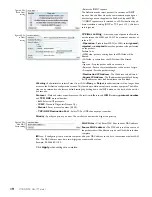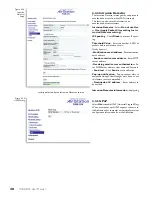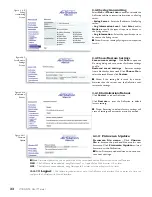
13
WBR-G54 User Manual
Examples of WEP key:
64-bit ASCII: 5 digits of alphanumeric characters, “ab34Y”
128-bit ASCII: 13 digits of alphanumeric characters, “123456abcdef7”
■
Note: ASCII WEP keys are case sensitive.
64-bit HEX: 10 digits, using characters 0-9 and a-f, “00234ABCDE”
128-bit HEX: 26 digits, using characters 0-9 and a-f, “20123456789abcdeabcdeabcde”
TKIP
- TKIP (Temporal Key Integrity Protocol) is a WEP expanded encryption technique. TKIP has greatly improved
WEP’s weaknesses by rotating secret keys between every packet. TKIP uses WPA-PSK (pre-Shared Key).
Characteristics:
- The Initialization Vector is expanded from 24-bits to 48-bits.
- The Initialization Vector is randomized.
- Uses a different RC4 key for every packet.
AES
- AES (Advanced Encryption Standard) is a next generation encryption technique discussed by the IEEE 802.11i
committee. TKIP improves WEP’s weakness, however AES also changes encryption method away from the weaker
RC4 style. Throughput decreases 10 to 20 percent when TKIP software encoding is used. AES uses a hardware co-
processor and performance does not decrease when used. AES uses WPA-PSK (pre-Shared Key).
Characteristics:
- The US government uses the AES encryption method. AES encryption has not been broken/hacked to date.
- The hardware co-processor has less throughput loss than other forms of encryption.
WPA-PSK
- TKIP and AES requires a WPA-PSK (Pre-shared key) for wireless client computers to authenticate
with the AirStation and then encryption of the data takes place by TKIP or AES. The wireless computer’s settings
must use the same encryption method and key.
Input Method:
8 to 63 characters in ASCII or 64 digits hexadecimal key.
Example 1: [ airstation -WPA-PSK ]
Example 2: [0123456789abcdef0123456789abcdef0123456789abcdef0123456789abcdef
WPA Group Rekey Interval
- When TKIP or AES is selected, the encryption key is renewed at this interval.
This interval is in seconds; the range of acceptable values is 0-3600.
If 0 is entered, key is never renewed.
■
Note: The lower the rekey interval, the more often a rekey occurs. Setting a low rekey interval may affect
performance.
IEEE802.1x/EAP authentication (WPA)
- Con
fi
gure Authentication and WPA Settings.
Do not authorize
- Do not use any RADIUS Server based authentication.
Authorize
- Authorized clients access this AirStation via RADIUS Server.
Use 802.1x/EAP to authorize every wireless client who wants to access the AirStation by using 802.1x/EAP and a
RADIUS Server. The RADIUS server provides login information for every user establishing a more secure system
than TKIP or other
fi
xed encryption key methods. This also reduces the amount of necessary key maintenance.
A RADIUS server is necessary for IEEE802.1x/EAP authentication. Enter [RADIUS Server], {RADIUS Port] and
[RADIUS Key] information.
RADIUS authentication
RADIUS Server
- Enter RADIUS server IP address.
RADIUS Port
- Enter port number for authentication.
RADIUS Key
- Encryption key between RADIUS Sever and the AirStation. Enter same key as registered in the
server. Use a 1 to 256 character alphanumeric code.


